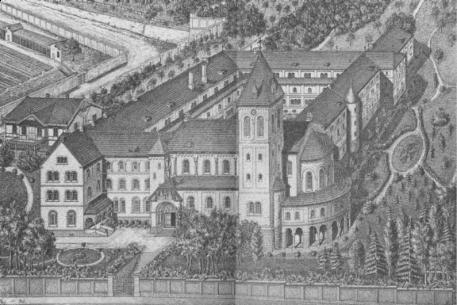Church of Monastery of Saint Gabriel
The Beuron Arts originated in the 1860’s at the Benedictine abbey of St. Martin in Beuron in the southwest German state of Baden-Württemberg. The artistic influence of what became known as the Beuron School of Arts spread beyond Germany throughout Europe to such countries as Austria, France, the Netherlands, and Slovenia, while the artwork of students of the School can be seen in the U.S., China and Israel. The Beuron Arts had a noticeable effect on the works of artists of the early 20th century such as Plečnik, Mucha, Kotěra, while in Prague they are represented in the Emmaus monastery, St. Gabriel Church, the Church of the Sacred Heart, and Holy Family Church. Other important Beuron-inspired interiors in the Czech Republic can be found in the towns of Teplice, České Budějovice, Hradec Králové, Opava etc.The Beuron artists dealt with architecture, sculpture, paintings, and crafts such as gilded works. Great emphasis was placed on Lenz's Canon – simple, linear abstracts representing geometric styles corresponding to mathematical symmetry and rhythm, order and harmony. Thus, even in the ornamentations you can see circles, triangles and squares in which symbolism played a dominant role, and to which were added several variations of straight lines, diamond shapes and zigzag patterns, spirals (symbolizing eternity), ripples (symbolizing the birth and death of natural life), hooped lines, and dots and stripes laid out in rhythm. The Beuron Arts adopted the blazing colors from the dawn of Christianity which has a valid symbolism.
- Log in to post comments


